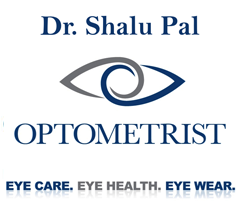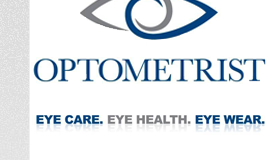Amblyopia (Lazy Eye)
It is estimated that three percent of children under six have some form of amblyopia. Young eyes need proper visual stimulation in order for mature vision to develop. For this to happen both eyes need clear images of the world to focus on the retina and then be transmitted to the visual cortex of the brain. Amblyopia also known as “lazy eye” is a condition that occurs when vision in one eye is reduced because the eye and the brain are not working together properly during critical periods of development.
The visual cortex develops dramatically in babies and young children and it continues to develop throughout the first decade of life. Anything that interferes with a normal image on the retina during this time can lead to amblyopia. Good eyesight needs a clear focused image that is the same in both eyes. But if the two images are significantly different from one another the brain cannot combine them and the vision pathways won t develop properly. This often leads to a permanent reduction in vision if not treated during the critical development period from birth to seven years of age.
Amblyopia is the most widespread cause of reduced vision in children. It is estimated that three percent of children under six have some form of amblyopia. It has many causes but most often results from:
1. Strabismus. This is the medical term for misaligned (or “crossed”) eyes. The misaligned eye points in a different direction thus seeing a different image than the straight eye. The child with strabismus often suppresses or shuts off the misdirected eye to avoid double vision. Over time the crossed eye becomes amblyopic if it is not made to function. Treatment for strabismus usually involves eye muscle surgery to redirect the eye although spectacles can correct some types of strabismus. Strabismus is present in approximately two percent of children and treatment before the age of eight ensures the best possible visual acuity function and cosmetic results.
2. Uncorrected Refractive Error. Refractive error can be due to hyperopia, myopia or astigmatism. When there is a significant difference in image quality between the two eyes (one eye focusing better than the other) a child has a high risk of developing amblyopia. The brain usually has difficulty balancing the visual difference and to compensate it will favor the stronger eye and suppress the image of the weaker eye. Both eyes may look normal even though one eye has poorer vision. In rare cases both eyes can develop amblyopia if there is a significant refractive error in both eyes.
Amblyopia is often without symptoms although sometimes a child will close one eye or squint when focusing on an object. Since amblyopia often occurs in one eye and young children don’t know what optimal vision is like most will not complain of any visual problems. Children that are old enough to vocalize may complain of eye fatigue or headaches.
The key to restoring proper vision is through early diagnosis and treatment. Amblyopia can be treated fairly successfully between the ages of two and seven but the success decreases with age. Because there are several causes of amblyopia the method of treatment must match the problem. Treatment first involves correcting the underlying problem:
- glasses are prescribed for improved focusing or misalignment of the eyes
- strabismus surgery is undergone to straighten the muscles in the eyes if non-surgical means are unsuccessful
Following the correction of the underlying cause treatment for amblyopia involves getting the child to use the weaker eye. In most cases the ideal method is to place a patch over the stronger eye thereby forcing the amblyopic eye to do all the work. Patching is an effective method that can significantly restore vision loss. Adhering to a strict patching schedule recommended by your eye care practitioner is essential for optimal results; it continues until the vision in the amblyopic eye can no longer be improved. Once the eye care practitioner confirms that vision is close to equal in both eyes he or she may reduce the patching to part-time use or to alternating patching of both eyes. The entire process can last anywhere from a few weeks to months to years. It is important to watch closely for signs of recurrence once the patch treatment is discontinued. An alternative to patching is the use of atropine drops to blur the vision of the good eye in order to force the weaker one to work.
Regular eye examinations are essential to prevent vision loss. It is relatively easy to overlook poor visual function in a young child so routine testing of eyes is necessary before age three. Early detection of the problems that may lead to amblyopia can prevent it and in most cases treating amblyopia before the eyes are fully developed can reverse the condition. If not treated early enough an amblyopic eye may never develop good vision and may even become functionally blind.






